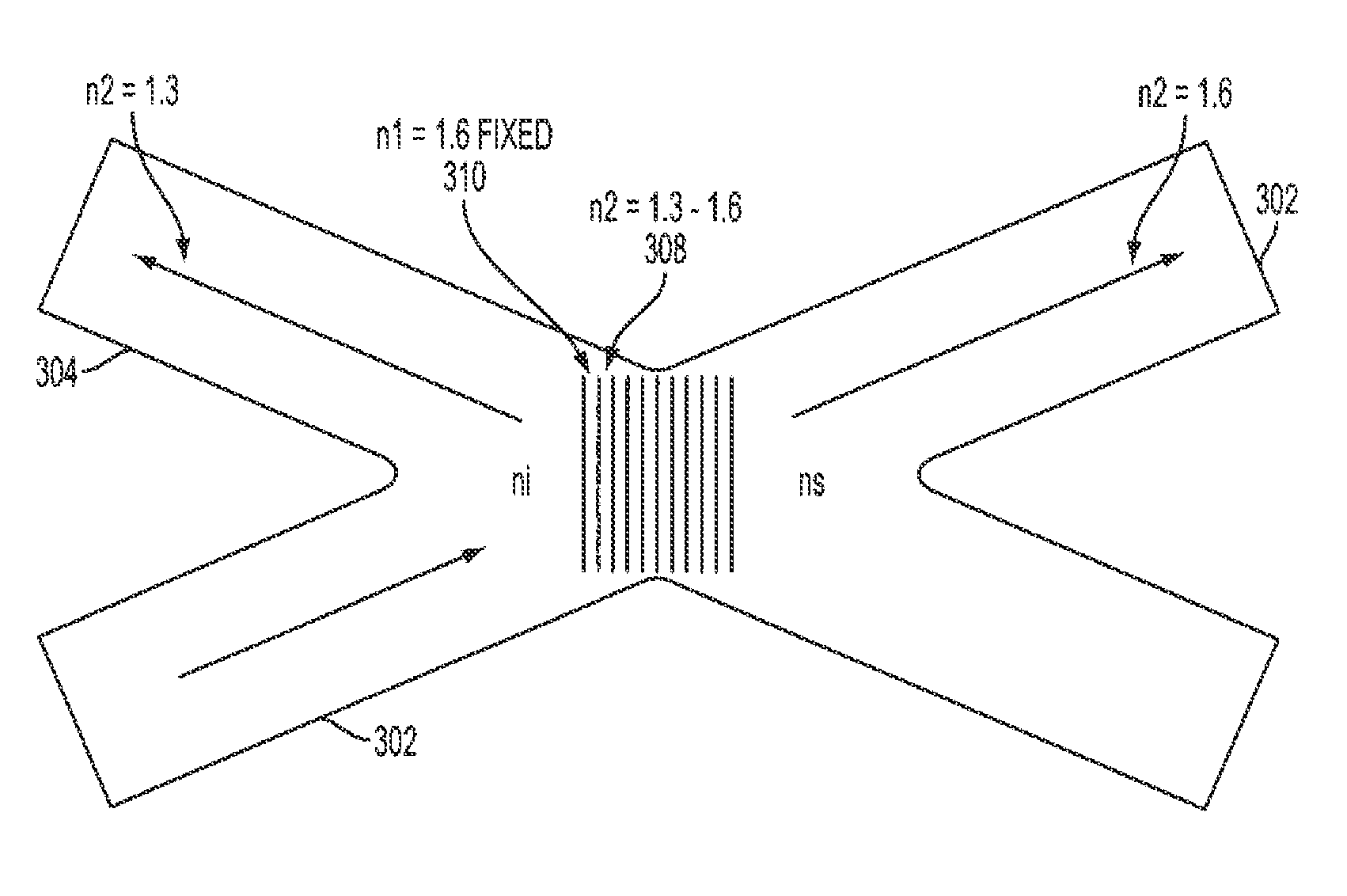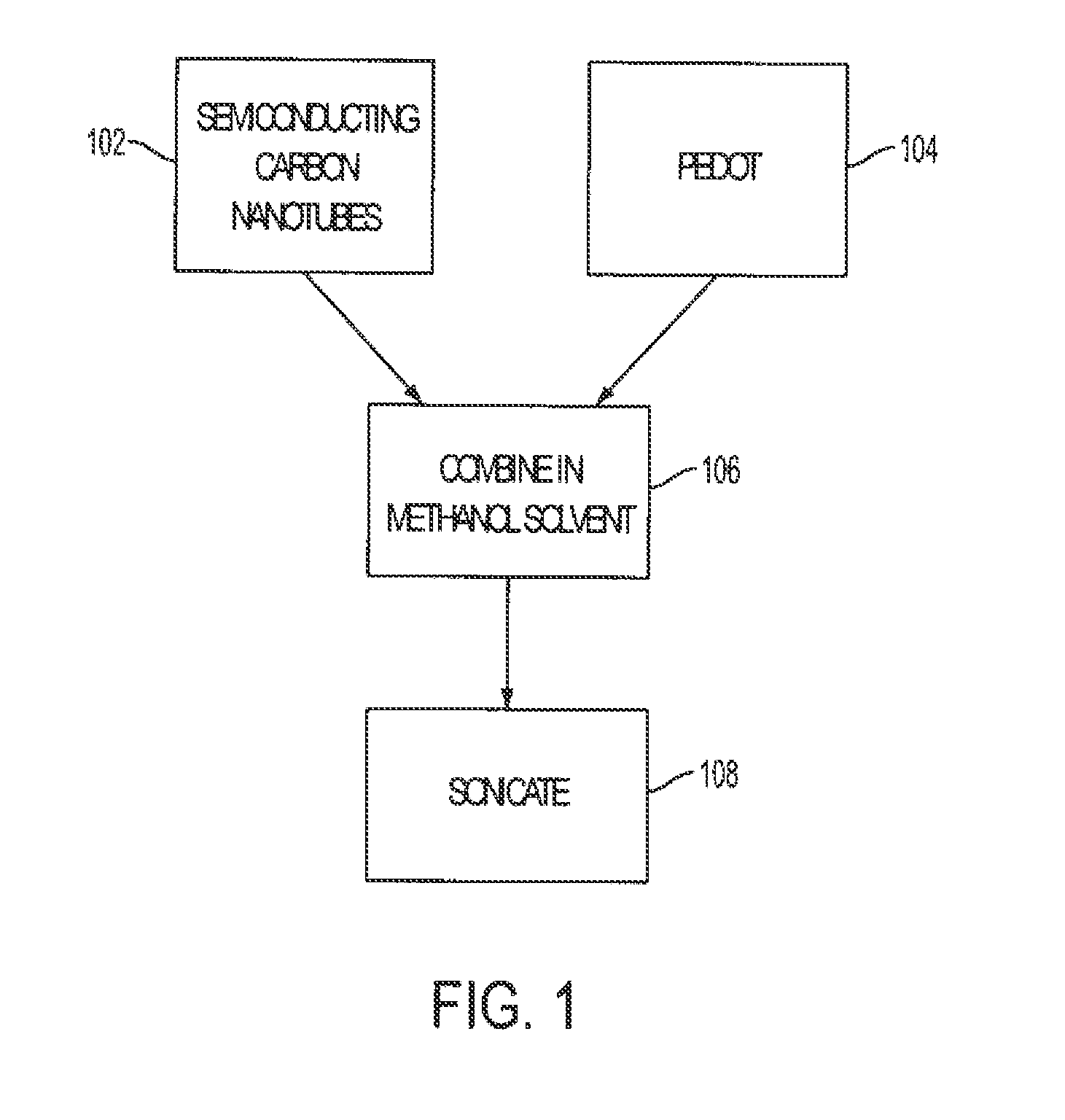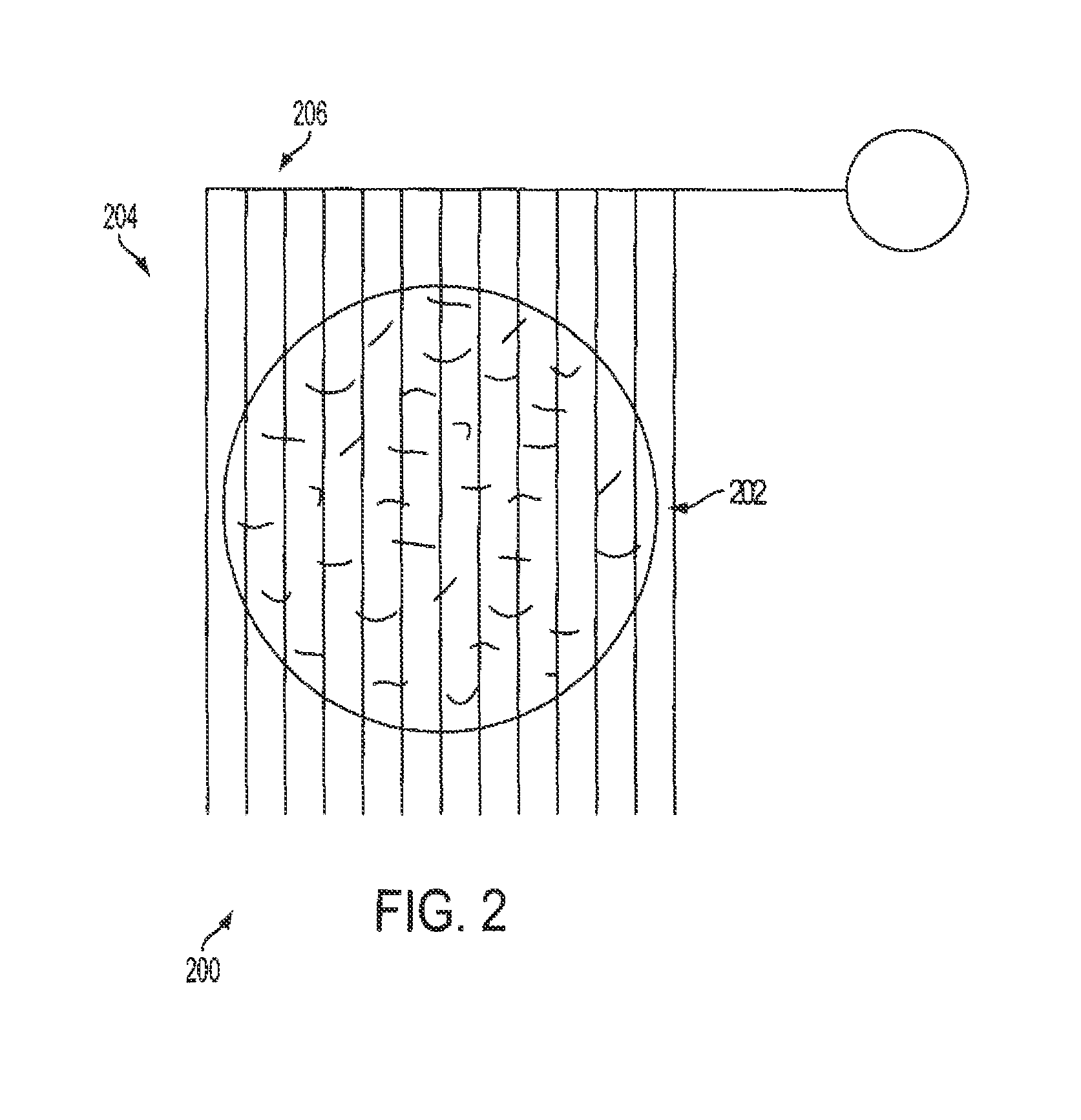Conductive coating based on polymer-carbon nanotube composite
a technology of carbon nanotubes and composites, which is applied in the direction of instruments, optical elements, optics, etc., can solve the problems of reducing the service life of the portion, so as to achieve long service life, improve service life, and improve service life.
- Summary
- Abstract
- Description
- Claims
- Application Information
AI Technical Summary
Benefits of technology
Problems solved by technology
Method used
Image
Examples
Embodiment Construction
[0031]Preferred embodiments of the present invention will be set forth in detail with reference to the drawings, in which like reference numerals refer to like elements or steps throughout.
[0032]FIG. 1 is a flow chart showing a preferred process of forming the conducting film.
[0033]Semiconducting carbon nanotubes are provided in step 102, and PEDOT or another suitable polymer is provided in step 104. They are mixed in methanol or another suitable solvent in step 106 and sonicated in step 108. As noted above, a highly conductive film results.
[0034]Films such as the type described above would find numerous applications that will have commercial value. One such application is the creation of a film that would have the properties of providing an image of the light or ionizing radiation that impinges the film. This would have enormous application is the areas of Homeland Security to detect radiation from nuclear materials or in the area of night vision where an effective night vision gog...
PUM
| Property | Measurement | Unit |
|---|---|---|
| thick | aaaaa | aaaaa |
| resistance | aaaaa | aaaaa |
| Young's modulus | aaaaa | aaaaa |
Abstract
Description
Claims
Application Information
 Login to View More
Login to View More - R&D
- Intellectual Property
- Life Sciences
- Materials
- Tech Scout
- Unparalleled Data Quality
- Higher Quality Content
- 60% Fewer Hallucinations
Browse by: Latest US Patents, China's latest patents, Technical Efficacy Thesaurus, Application Domain, Technology Topic, Popular Technical Reports.
© 2025 PatSnap. All rights reserved.Legal|Privacy policy|Modern Slavery Act Transparency Statement|Sitemap|About US| Contact US: help@patsnap.com



